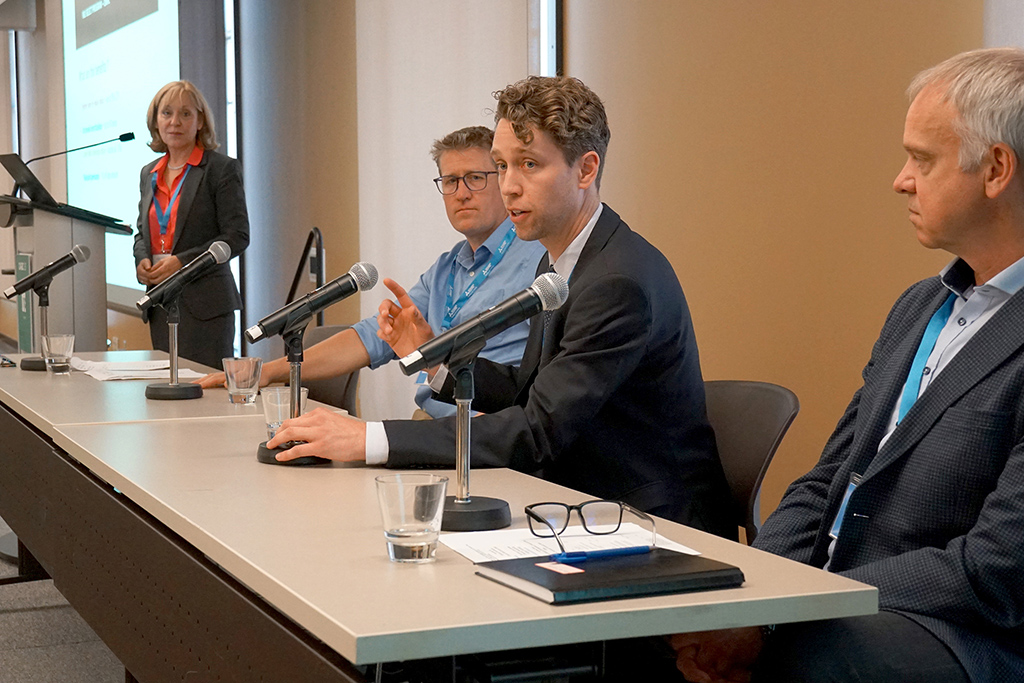The walls separating green developers from financial lending institutions are starting to come down as Canada looks to meet ambitious energy and decarbonization targets over the next eight years.
“Obviously we’re not yet mainstreaming with lenders, but we are getting more choice in green financing, particularly this year,” said Alison Chave, vice-president of debt capital markets with JLL Canada.
Chave moderated a panel session on what is accelerating the transition to a lending-friendly environment at the Canada Green Building Council’s (CaGBC) Building Lasting Change conference recently in Toronto.
The session looked at financing options available from private, public and capital markets that could improve cash flow and profitability, key factors in the movement speed in the world of commercial, multi-residential and industrial buildings.
A Canada Infrastructure Bank (CIB) initiative launched a year ago with a $2 billion loan portfolio for retrofits of privately-owned commercial, industrial and multi-unit residential building retrofits targeting decarbonization is a case in point.
Among its objectives are energy cost reductions, job creation and to improve building quality and affordability, said Aaron Berg, director of energy efficiency investments at the CIB.
When founded about a year ago, the CIB initiative provided a three per cent loan based on retrofits with at least a 30 per cent decarbonization and one per cent for projects of 50 per cent or more.
“We will always be below market (loans) but we are not interested in displacing functioning commercial real estate finance markets,” Berg said.
To reduce investment barriers, the CIB uses Investor Ready Energy Efficiency – a CaGBC-sponsored certification, which Berg described as being “like a third-party appraisal” on the value of buildings.
“It starts to create a standardized step…and standardized data that we hope will be very valuable to the private sector capital markets.”
Another green building lending source in Canada, the Vancity Community Investment Bank, has conducted $620 million deals on clean energy projects, including renewable energy projects.
In one case it provided a $25 million loan for the retrofit of a heritage designated commercial building in downtown Toronto that included the replacement of all building systems, Eric Visser, the company’s business development manager, told the panel.
While its loan rates are not as low as the CIB’s rates, Vancity offers flexible loans with fewer reporting requirements in part because it has a clean energy team in-house that evaluates retrofits, Visser said.
Vancity keeps an internal scorecard on every transaction which is based not only on green outcomes but also social factors such as affordability in underserved communities, he pointed out.
Ivanhoé Cambridge issued the first unsecured green bond in the Canadian real estate market for about $300 million just before the pandemic, according to Rob Simpson, senior director of sustainability at Ivanhoé.
In the last year, the big developer converted about $8.5 billion worth of corporate debt into environmental, social and governance (ESG) data or sustainability-linked loans tied to ESG performance. Its objectives are to meet targets of 35 per cent GHG emission reductions by 2025, low-carbon investments of $6 billion by 2025 and a commitment to increase GRESB scores annually for global portfolio assets. GRESB is an industry-led organization providing ESG data to financial markets.
Another financing avenue is the CMHC’s MLI Select program for multi-residential projects.
Rolled out in March, it offers various financing options based on affordability, energy and accessibility, Chave told the seminar, noting it allows users to “stretch take-out financing up to 50 years.”
“This is a great example of the government stepping in and moving the needle on affordability and green buildings all at once,” said Vancity’s Visser.
Still, while the value for projects valued at “dozens of millions” is tangible, he said some of Vancity’s smaller clients have found the CMHC program to have “rigid” requirements and high premiums.
Visser reminded owners looking at financing green retrofits that bankers aren’t green building experts so they need help to comprehend the project’s value.
Added Simpson, “None of us know how exactly we’re going to get to 2040 or 2050 (targets) but having a framework to do that and being thoughtful, comprehensive…and commit to programs with science-based targets is really important.”
He advised owners to not overthink strategies when planning green retrofits because the answers will come.
“There is enough information out there now to start on a program in terms of net-zero strategies.”



Recent Comments
comments for this post are closed